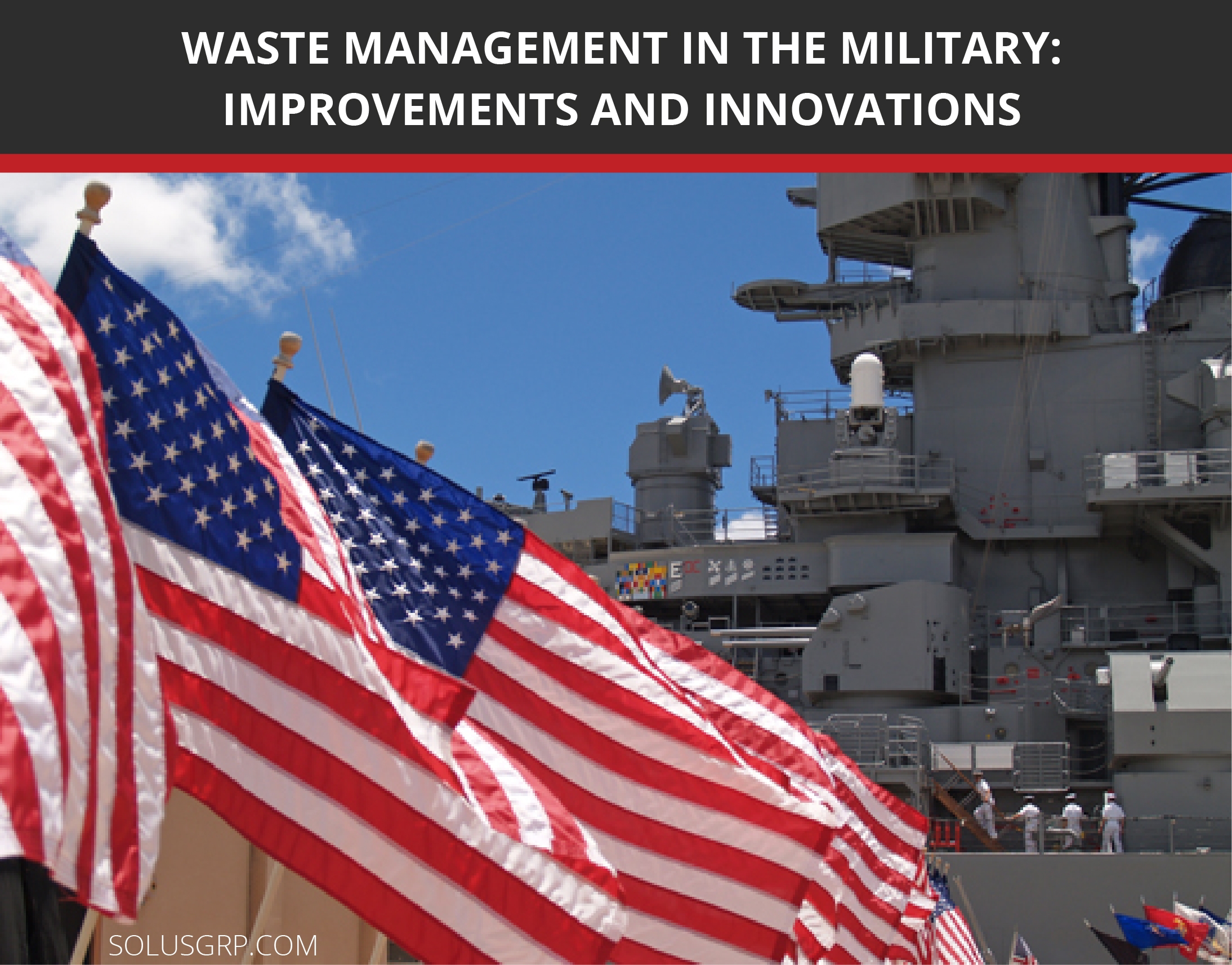We use cookies to make your experience better. To comply with the new e-Privacy directive, we need to ask for your consent to set the cookies. Learn more.
Waste Management in the Military: Improvements and Innovations
The U.S. Military faces an array of waste management challenges; a large mission scope and wildly varying settings make traditional practices ineffective. For instance, aircraft carriers must patrol the oceans for long stretches of time, while administrators of an outpost in Afghanistan must create a comprehensive waste management program from scratch. Nevertheless, our armed forces have found ways to innovate in the most difficult conditions imaginable. Here are a few examples:
The Navy finds big savings in recycling.
In the old days, waste management on ships amounted to throwing trash overboard. These days, we've become more ecologically (and economically) minded. With specialized equipment, the Navy's waste management workers separate and process literal tons of trash.
According a petty officer on the USS John C. Stennis, the aircraft carrier processes "100,000 lbs of plastic, 300,000 lbs of processed metal and glass, and 200,000 lbs of cardboard per month while out to sea." 
Each of these materials takes a slightly different path to its final destination. The entire crew pitches in by throwing waste in the appropriate receptacles, which are divided into plastic, glass, aluminum, stainless steel, and paper. Then, hydraulic trash can dumpers — with bolted down feet to keep them steady — may be used to dump each material into its next station.
For instance, plastic is shredded and melted down into giant discs, which are stored on the ship until it returns to port. This unique process saves space on board and allows the Navy to recycle the massive pucks of plastic once the ship returns to land. Cardboard is likewise compressed into a ball, bailed, and craned off the ship for recycling at port.
Metal and glass are shredded and placed in burlap sacks. Food waste is pulped to be broken down organically. By separating waste and treating each material separately, the Navy is able to recycle tremendous amounts of plastic, cardboard, and food waste.
Forward operating bases get creative to go green.
If waste management on the open sea sounds difficult, try managing waste streams near the front lines of a war. That's the task that many forward operating bases (FOB) face. As opposed to main operating bases, which provide backup and exist in a secured area, FOBs support military operations nearer to the action. These bases are often austere with little or no infrastructure.
Because of their bare-bones nature, FOBs have traditionally burned or buried waste — a bad option for the environment and the health of our soldiers. However, promising new technology offers a superior option. The Strategic Environmental Research and Development Program (SERDP) hopes to turn solid waste into synthesis gas that can fuel the FOB's generators. The entire system fits in a standard shipping container, making it feasible for these makeshift bases to run them.
By burning trash in the gas-generating system, FOBs can reduce harmful emissions while creating valuable energy. The high-tech process solves two problems — what to do with waste and how to fuel the base — at once.
America's military continues searching for solutions to its unique waste management challenges. America's armed forces hope to minimize negative impacts on the environment while keeping our country safe.
References:
"Forward Operating Bases: Water and Waste Management." SERDP: DoD's Environmental Research Programs. n.d. Web. 19 Apr. 2018.
Johndro, Justin. "Stennis Waste Management Saves Money, Environment." Navy.mil. 17 May 2011. Web. 19 Apr. 2018.
